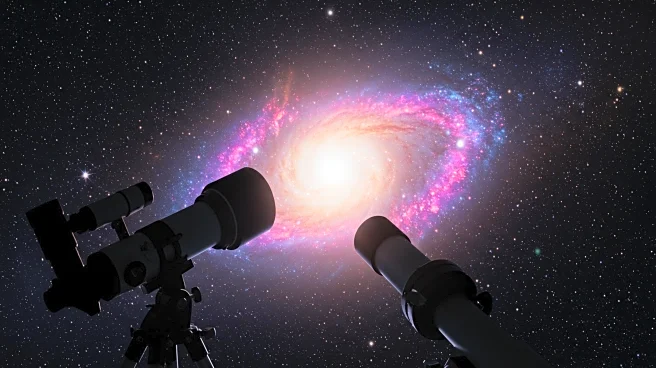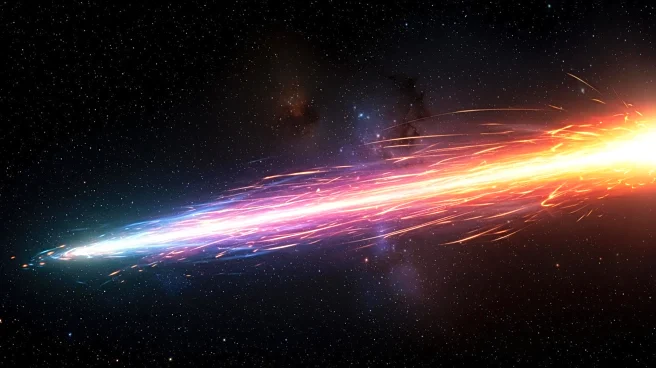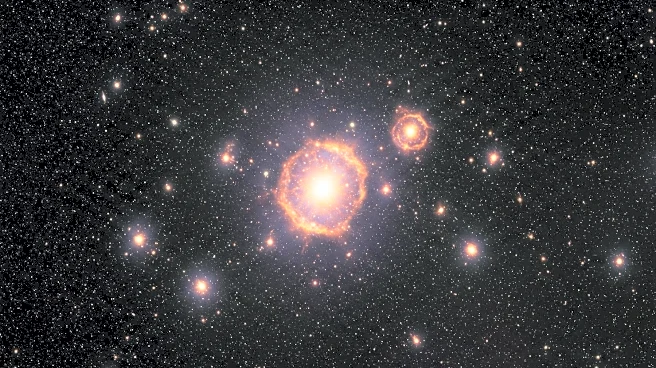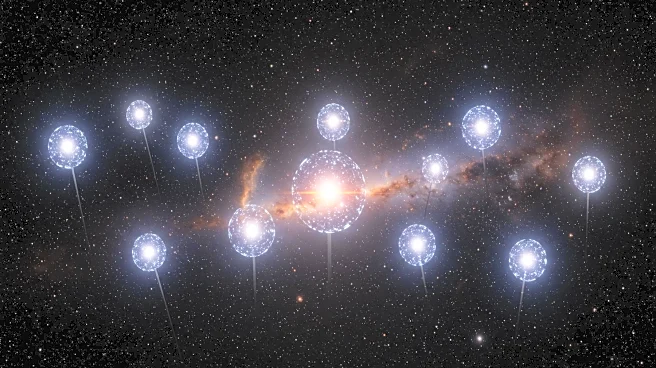What's Happening?
Astronomers have discovered a toroidal magnetic field within the blazar PKS 1424+240, which powers a jet aimed at Earth. This finding, based on 15 years of observations using the Very Long Baseline Array (VLBA), explains the blazar's ability to emit high-energy neutrinos and gamma rays despite its sluggish appearance. The alignment of the jet towards Earth amplifies its brightness due to special relativity effects, providing a rare opportunity to study the jet's magnetic field structure. This discovery confirms that active galactic nuclei with supermassive black holes are powerful accelerators of both electrons and protons, contributing to high-energy neutrino emissions.
Why It's Important?
The discovery strengthens the link between relativistic jets, high-energy neutrinos, and the role of magnetic fields in cosmic accelerators, marking a milestone in multimessenger astronomy. Understanding these mechanisms can enhance models of cosmic phenomena and improve predictions of high-energy emissions. This research contributes to the broader understanding of particle acceleration processes in active galactic nuclei, which are among the most powerful accelerators in the universe. The findings have implications for the study of cosmic rays and the fundamental physics governing high-energy astrophysical processes.
What's Next?
Researchers will continue to monitor relativistic jets in active galaxies using the VLBA, aiming to further understand the complex evolution and magnetic field structures of these jets. The ongoing MOJAVE program will provide more insights into the correlation between jet activity and high-energy emissions. Future studies may explore the implications of these findings for other cosmic phenomena and refine models of particle acceleration in active galactic nuclei.
Beyond the Headlines
This discovery highlights the importance of long-term observational programs like MOJAVE in advancing our understanding of cosmic phenomena. The use of Very Long Baseline Interferometry (VLBI) allows astronomers to achieve unparalleled resolution, enabling detailed studies of distant cosmic jets. The findings also underscore the significance of international collaborations in astrophysics, as the research was supported by the European Union's MuSES project.











